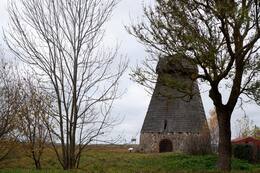If necessary, we will fight: Battle of Radviliškis with the Bermontites in 1919.
On November 21-22, 1919, fateful battles took place in the city of Radviliškis between the Lithuanian army and the Bermontinians - a joint force of Russian prisoners of war and German volunteers, which ended in a significant Lithuanian victory.
As Povilas Barštaitis, a museum curator at the Vytautas the Great War Museum, writes, at the end of the summer of 1919, as soon as the Bolsheviks were driven out of Zarasai, clouds of a new threat began to gather in the western part of Lithuania. The Bermontists, led by Pavel Bermont-Avalov, although they claimed to be fighting against the Bolsheviks, in reality sought to restore the Russian Empire, in which Lithuania would be just one of the provinces.
Having captured the Radviliškis railway station, the Bermontites cut off the vital communication link between the capital Kaunas and the Lithuanian army operating on the Bolshevik front. A garrison of 600-800 enemy troops entrenched themselves in the city's brick buildings, a cemetery, and a windmill.
A participant in the fighting, the chief Antanas Šukys, described the enemy as follows: "In the end, it doesn't matter to us who they are. We knew very well that they were the enemies of Lithuania, and that if necessary, we would have to fight them."
Although the Lithuanians failed on the first day of the attack, on the second day, having gathered a larger and more experienced force, they captured Radviliškis. The Bermontites fled, leaving behind a large amount of war booty. Only the intervention of Henri Albert Nisel, the head of the Entente Military Control Commission, stopped the further Lithuanian attack.
Related objects
Radviliškis windmill
An octagonal, 4-story wooden mill stands near the outskirts of the city of Radviliškis, in the village of Vaiduliai.
The Radviliškis windmill was built at the end of the 19th century and restored in 1984-1985. It is said that on November 22, 1919, the famous battle of the Lithuanian Volunteer Army with the Bermontinkai – a provocative Russian military unit – took place near the mill. When the Bermontinkai captured Radviliškis – an important railway junction, Lithuania’s independence was in danger. The 2nd Algirdas Regiment, led by Lieutenant Colonel V. Grigaliūnas-Glovakkis, was entrusted with the task of recapturing Radviliškis.
About 30 Lithuanian soldiers died in the battle, but the fighting ended in a Lithuanian victory. According to volunteers who participated in the fighting, the entire company went out to attack the mill occupied by the Bermontites, the commander armed with a rifle always attacked first, and the others followed his example, so the mill was taken, and the next evening they managed to take over Radviliškis.
To commemorate the 70th anniversary of the battle against the Bermontites, a chapel pole was erected and 70 oak trees were planted near the mill in 1989. The oak grove was supplemented in 2019, to commemorate the 100th anniversary of the battle.
Although there are versions that the battle itself could have taken place a little further away, at another mill, it was the Radviliškis windmill that became the symbol of the battle. Historical reconstructions of the battle have been held at the Radviliškis windmill more than once, in 2010 and 2014. the battle was recreated by reenactors from military history clubs from Lithuania, Estonia, Latvia and Poland.





